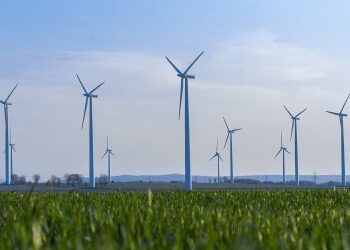Daniel Lurch, lead PM of the Green Planet fund at J. Safra Sarasin Sustainable AM talks us through his answers to those key questions about the green transition which are on the minds of advisers and wealth managers today
Green themes remain a desirable portfolio allocation in a still mixed broader economy. For investors seeking a balanced exposure to defensive and cyclical sectors, the green transition can offer a well-rounded strategy. That’s why it’s important not to miss out. But how can you confidently spot the best green shoots and avoid any pitfalls? Here are our top five questions on green investing.
1)Is green investing still attractive in 2024?
Maintaining exposure to the green transition in your portfolio remains essential for any investor. Despite a subdued 2023, the global ESG investment market is worth nearly USD 18 trillion and is expected to maintain its impressive annual growth rates of 9% over the next decade.1
Investing in the green transition remains the way to gain exposure to a rapidly expanding investment landscape, covering a whole range of opportunities beyond clean tech. High-tech solutions like electric vehicles (EVs), power semiconductors and energy storage are particularly attractive right now, with an expected annual growth of 15%, 26% and 27% respectively by 2035. Traditional sectors such as waste recycling and water treatment are also showing promising trends with a growth forecast of 5%, while power grids are anticipated to grow 15% annually.
There are further reasons to be optimistic. There is broad political support for investing in green technologies, with governments around the world committing to this effect. Examples include plans to cut carbon generation and tighter regulation on waste recycling.
2)Are clean tech challenges a sign of wider problems in green investing?
Green investing is much more than just clean tech. Many green investment trends remain very healthy and the issues in clean tech are pretty much the exception.
It was indeed a tough year for clean energy stocks in 2023, especially for solar and wind energy. A lot of negative headlines and investor confusion were caused by a combination of company-specific issues and industry headwinds. These included fierce competition between clean tech suppliers, lengthy permit processes (particularly for wind turbines), together with challenging supply chain dynamics and cost issues.
Despite a difficult year, renewables remain among the key technologies of the future and will benefit from the transition to a zero-carbon economy. S&P Global Insights has forecast that global investments in clean energy will reach USD 700 billion by 2030.2
We think it’s a smart move to invest in clean tech by embracing the whole value chain of renewable energies, not just solar and wind. Electricity grids and power semiconductors are good examples of this.
3)What is the best approach for investing in the green transition?
The green transition will touch many parts of the economy, creating plenty of opportunities across a range of industries, particularly manufacturing, utilities and IT. That is why we think it’s best to be diversified globally – rather than focused on just one trend – as this helps reduce correlation and volatility. At Bank J. Safra Sarasin, we have identified four key areas where we think green trends are going to be the most attractive: ecosystem protection, resource efficiency, smart mobility and future energies.

How can investors capture these opportunities? By focusing on the green value chains, our investment approach helps us identify the technologies driving the energy transition and spot overlooked green solution providers with great potential.
4)What environmental issues are your portfolio companies dealing with?
Green Planet’s diversified strategy covers a wide range of environmental issues, focusing on the protection of air, water, and soil through our four thematic areas.
For air protection, we see attractive opportunities in fossil fuel alternatives, electric vehicles and carbon capture. For water, it is about water efficiency, water treatment, and water recycling.
For soil, we look into agriculture, resource usage, and the circular economy.
We look for companies that offer real solutions within their green value chain and divide them into two categories. One is established providers of environmental solutions, while the other includes disruptors that have developed breakthrough technologies with strong growth prospects. This approach lets us to be flexible and find exciting opportunities, particularly in the small and mid-cap space.
Achieving net zero by 2050 will cost society a further USD 3.5 trillion per year, i.e. a 60% increase on current investment levels, which will create significant opportunities for the private sector. Companies offering products and services that enhance resource efficiency and help cut emissions stand to be rewarded with long-term sustainable returns and superior growth rates.
5)How do you measure the environmental impact of green investments?
Specifically, we focus on “green” solutions for the protection of natural capital and/or supporting the energy transition.
To measure these environmental contributions, we look at the company’s revenues that are directly related to activities which we view as environmentally sustainable. The green revenue assessment is covered by the Thematic Equities investment team and the Sustainability team on a best-effort basis based on our proprietary methodology.

Right now the portfolio’s green revenue exposure is at 50%, which is above its sustainability objective set at min. 30% (weighted average on the portfolio level). Over time, we expect the share of green revenues to rise further as companies expand and disclose further their environmentally sustainable activities.





